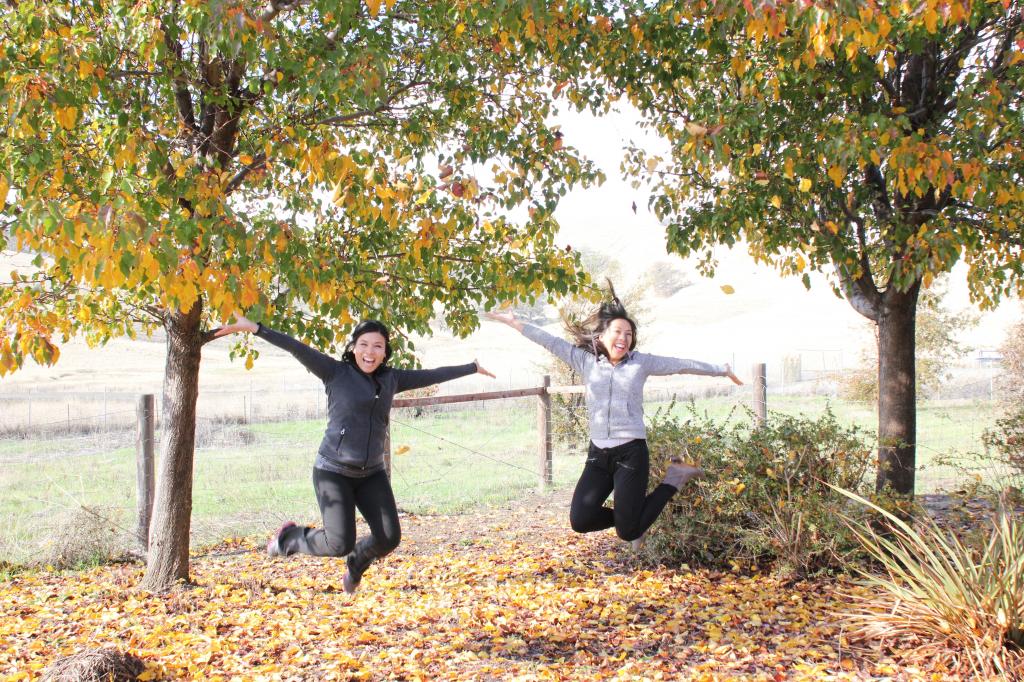
{Photo with my sister in Fairfield, CA}
While skimming research articles for scholarly information to include in a blog post on Seasonal Affective Disorder (SAD), I put the information aside for a bit in order to write about my own observations and experience dealing with seasonal mood changes.
Long story short…basically, A LOT of people get depressed during the holidays, fall, and winter seasons. But not everyone meets enough criteria to be formally diagnosed and treated for SAD . Yet, a lot of people feel BAD (no acronym…just “bad”) and guilty that they’re not as happy as expected to be during the joyous holiday season. Several of my patients say they feel down, need to force themselves out of bed, and lack motivation. Many also attribute feeling depressed due to missing family members and loved ones, especially since holiday celebrations tend to make their absence even more apparent.
I read quotes that spread throughout social media with phrases along the lines of “December is the last month of 2014…get off your butt and make it count!” Honestly, I myself would be content if I made it through December 2014 by accomplishing the bare minimum of my daily tasks.
And don’t get me wrong — the holiday seasons are a joyful time for many, and I love when people go all out with their decor, gift-giving, and traditions. But I want to acknowledge that there’s a range of how people feel this time of year and that it’s okay if you don’t feel peppy, super motivated, holiday cheery, and overjoyed because there are a lot of people who feel the same way. With my patients, I try to normalize and validate their feelings, focus on the general progress they’re making, and if their mood declines this season, we try to to work on ways to get through this difficult time of year and hopefully move forward once the holidays are over.
Now, here are some bullet points on SAD:
- to meet criteria for SAD, one must experience at least 2 yearly consecutive episodes of depression (with a seasonal pattern), which causes significant impairment in daily functioning (for example: calling in sick for work, negatively impacting relationships, feeling suicidal, etc). For more details, please click here for a good summary on the NAMI website.
- About 5% of the U.S. population experiences SAD, with symptoms lasting approximately 40% of the year
- Cause may be due to a combination of factors, both biological and psychological which may include the following:
- One of the chief biological causes found in the literature is due to changes in our sleep/wake cycle (circadian rhythm) which tend to occur with seasonal changes (Anyone else struggle with winter daylight savings time? I definitely do). For more details, check out this research article by Dr. Alfred Lewy.
- more vulnerabilities to stress this time of year (as I mentioned above)
- There are treatments that have been researched to help: light therapy, psychiatric medications, psychotherapy (specifically cognitive behavioral therapy)
If you are struggling with symptoms, you shouldn’t have to go through this alone. Please seek help by reaching out to your doctor, who can discuss possible treatments or even refer you to a psychiatrist or therapist.
And if you know someone who might be struggling with symptoms, you can help by showing them your support and encouraging them to seek help.
References:
Rohan KJ, Roecklein KA, Haaga DA. Biological and psychological mechanisms of seasonal affective disorder:
a review and integration. Curr Psychiatry Rev. 2009;5(1):37-47.



